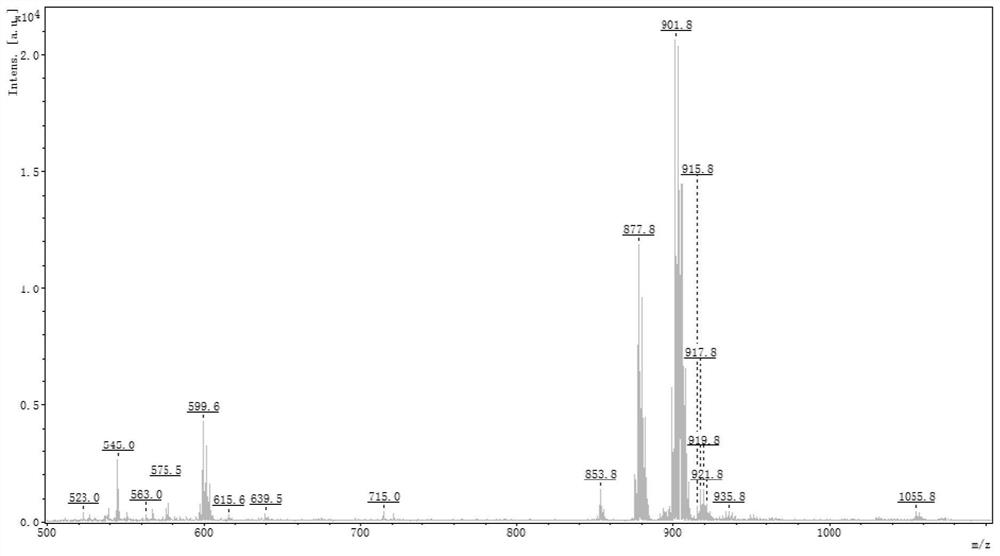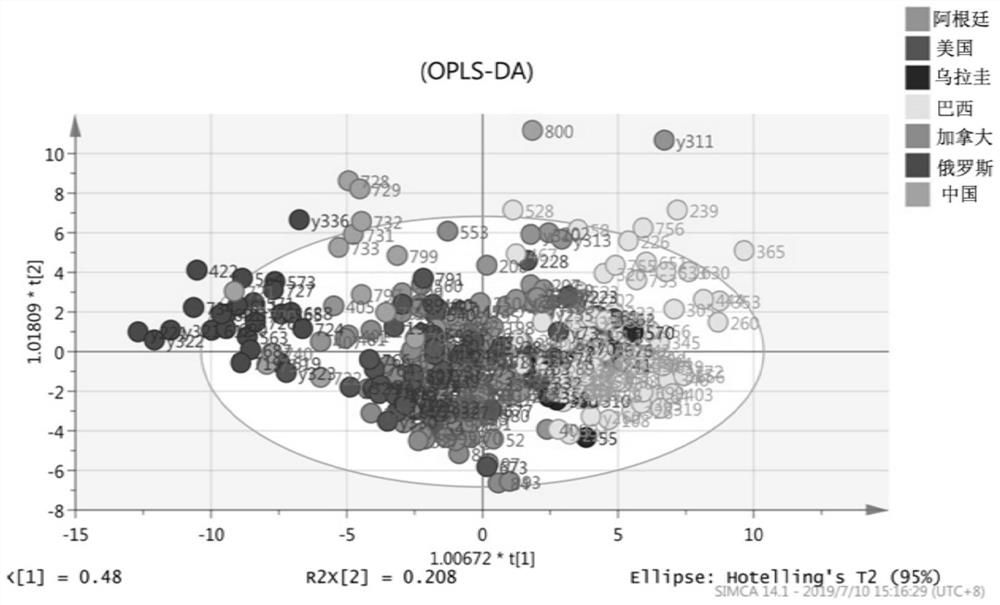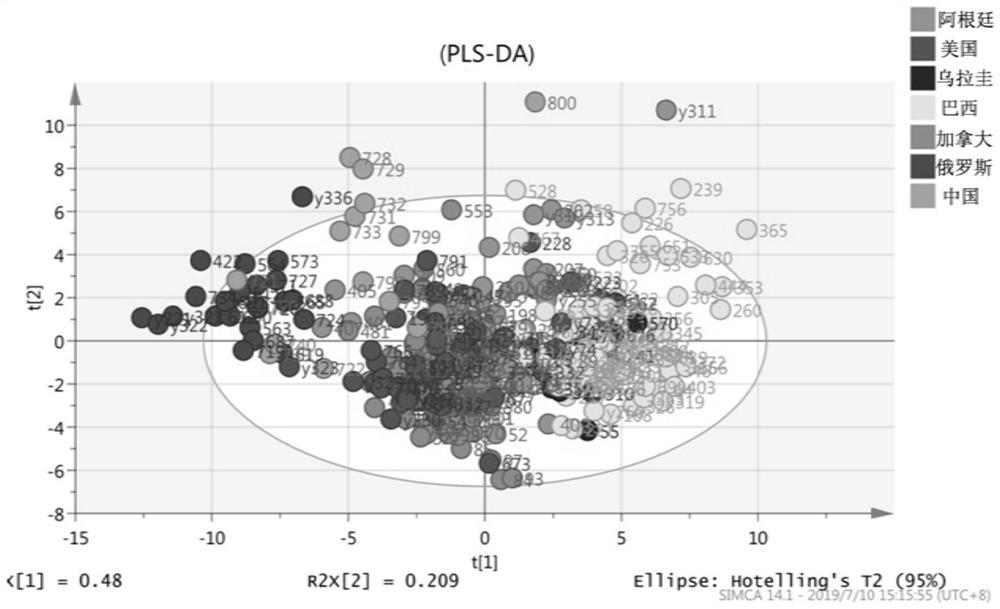Soybean origin traceability identification method based on combination of MALDI-TOF/TOF and multi-element analysis technology
A technology of origin traceability and origin, which is applied in the direction of analyzing materials, material separation, instruments, etc., can solve the problems such as the inability to trace the origin of soybeans, and achieve the effect of improving the accuracy of traceability, improving accuracy, and improving accuracy
- Summary
- Abstract
- Description
- Claims
- Application Information
AI Technical Summary
Problems solved by technology
Method used
Image
Examples
Embodiment 1
[0076] Soybean samples from different origins with definite regions were selected, and the soybean samples from each origin were physically pressed to obtain a standard soybean oil sample and ground to obtain a standard soybean flour sample.
[0077] The process of collecting mass spectrometry data of standard soybean oil samples is as follows: the standard soybean oil samples of different origins with definite regions are used as the matrix, and the standard soybean oil samples are printed on the target plate containing the matrix with a cotton swab Above, every six standard soybean oil samples were calibrated by PEG, and each standard soybean oil sample was measured three times in parallel. The target plate is placed in the matrix-assisted laser desorption ionization time-of-flight mass spectrometer. The working conditions of the matrix-assisted laser desorption ionization time-of-flight mass spectrometer are: the mass spectrometer adopts positive ion mode to collect data, th...
Embodiment 2
[0098]This embodiment only describes the difference from the above-mentioned embodiment. In the present embodiment, the mineral element content data collection method of the standard soybean meal sample is: the mineral element content data collection method of the standard soybean meal sample in step S2 is: Get 0.5g of standard soybean powder sample and place it in a polyethylene digestion tube, weigh 0.5g of standard soybean powder sample to an accuracy of 0.001g, add 4ml of nitric acid, cover the sealing cap, and soak for 6 to 12 hours; after soaking, put The sealed polyethylene digestion tube is placed in the digestion instrument, and inert gas is pre-filled in the inner tank of the digestion instrument. After cooling, take out the inner tank and catch the acid on the electric heating plate. The temperature set by the electric heating plate is 150°C. After acid removal, transfer the digestate in the inner tank to a 50mL polypropylene centrifuge tube, and wash the inner tank...
Embodiment 3
[0107] This embodiment only describes the differences from the above-mentioned embodiments. In this embodiment, the high-resolution mass spectrum data of triglyceride compounds in the standard soybean oil sample are sequentially normalized and averaged, and the partial least squares method -Discriminant analysis method, and the mineral elements in the soybean flour samples were processed by partial least squares method-discriminant analysis method, and the PLS-DA soybean origin traceability identification model based on MALDI-TOF / TOF and mineral element content analysis was constructed. Such as image 3 MALDI-TOF / TOF based models and such as Figure 9 The PLS-DA model based on mineral element content analysis shows that the PLS-DA origin traceability identification model can significantly distinguish soybean samples from Brazil, Argentina, Canada, and the United States. The characteristic contribution elements in American soybeans based on the mineral element content analysis ...
PUM
 Login to View More
Login to View More Abstract
Description
Claims
Application Information
 Login to View More
Login to View More - R&D
- Intellectual Property
- Life Sciences
- Materials
- Tech Scout
- Unparalleled Data Quality
- Higher Quality Content
- 60% Fewer Hallucinations
Browse by: Latest US Patents, China's latest patents, Technical Efficacy Thesaurus, Application Domain, Technology Topic, Popular Technical Reports.
© 2025 PatSnap. All rights reserved.Legal|Privacy policy|Modern Slavery Act Transparency Statement|Sitemap|About US| Contact US: help@patsnap.com



